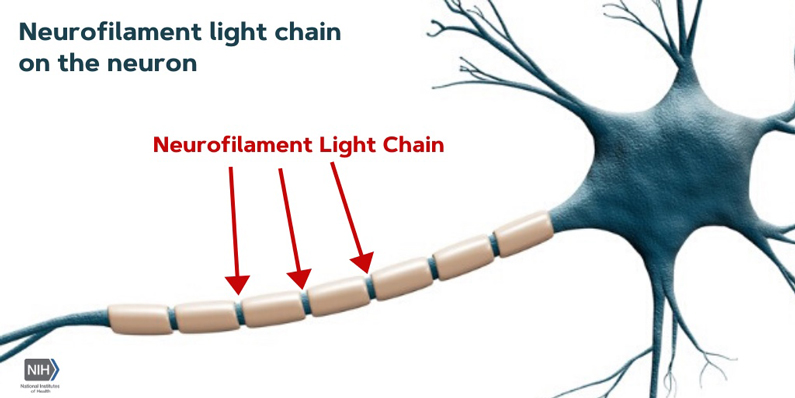Content on this webpage is provided for historical information about the NIH Clinical Center. Content is not updated after the listed publication date and may include information about programs or activities that have since been discontinued.

NIH Clinical Center.
Two studies conducted by the Rehabilitation Medicine Department at the NIH Clinical Center, demonstrated that a blood test of neurofilament light chain can accurately identify all stages - mild, moderate, and severe - of a traumatic brain injury. The studies also confirmed that neurofilament light chain was more sensitive when compared to 3 other blood biomarkers and imaging at detecting brain damage after a traumatic brain injury. Both studies were published in the July issue of Neurology.
According to Dr. Leighton Chan, chief of the Rehabilitation Medicine Department at the Clinical Center, "These studies are significant because there is no validated blood test that can reliably detect a traumatic brain injury."
Measuring neurofilament light chain with a blood test is faster, easier, and safer than the current procedure which is a spinal tap to measure it in the cerebral fluid.
Traumatic brain injury is a major leading cause of death and disability in the U.S. with more than 2.87 million emergency department visits, hospitalizations and deaths annually. While majority of all traumatic brain injuries are classified as mild (also known as a concussion), it is difficult to diagnose this condition. There are a wide range of variable behavioral and observational tests to help determine a patient's injuries but most of these tests rely on the patient to self-report signs and symptoms. Also, imaging has limitations with detecting micro-structural injuries in the brain.
Both studies also confirmed that serum neurofilament light chain could be a valuable compliment to imaging because of its sensitivity to detect damage to the neurons and brain structures. These are injuries which may be responsible for the long-term symptoms experienced by a significant number of athletes with acute concussions, and patients with more severe brain injuries.
According to Dr. Pashtun Shahim, the first author of both studies, one of the most unexpected learnings from this research is that a blood test with neurofilament light chain could detect the ongoing brain damage that can occur from days to as long as five years after one mild traumatic brain injury event.
Read more:
- NfL outperforms other blood tests to predict and diagnose traumatic brain injury
- Blood-based biomarker can detect, predict severity of traumatic brain injury
- Lester Davis

